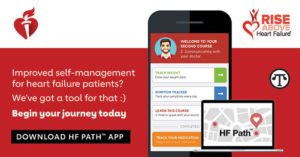Health, Home & Family
 (NAPSI)—Medicare’s annual enrollment period is now underway, and runs from October 15 to December 7, 2018. You may be happy with your current Medicare coverage, but it pays to shop around. Here are a few things to keep in mind.
(NAPSI)—Medicare’s annual enrollment period is now underway, and runs from October 15 to December 7, 2018. You may be happy with your current Medicare coverage, but it pays to shop around. Here are a few things to keep in mind.
Don’t shy away from shopping. Plan details change each year, so the policy that was best for you in 2018 may not be your best option for 2019. Changes to premiums, deductibles and co-pays can be costly. An analysis of more than 17,000 people using Medicare.com to compare Medicare plans found that just 10 percent were enrolled in the lowest-cost plan for their prescription drug needs. Those who switched to a new drug plan stood to save an average of $611.
Watch for changes in drug coverage. Read any letters from your insurance company outlining changes in your prescription drug coverage. Insurance companies often tweak their formulary, or list of covered drugs, each year. That can mean higher out-of-pocket expenses for you. Compare coverage for your prescriptions under any new Medicare plan you consider. Continue reading
 (NAPS)—The flu is nothing to sneeze at. According to the Centers for Disease Control and Prevention (CDC), influenza has resulted in between 9.2 million and 35.6 million illnesses annually since 2010. The best way to stay out of such statistics, the CDC says, is for everyone who is eligible and at least 6 months old to get a flu shot as soon as the vaccine becomes available.
(NAPS)—The flu is nothing to sneeze at. According to the Centers for Disease Control and Prevention (CDC), influenza has resulted in between 9.2 million and 35.6 million illnesses annually since 2010. The best way to stay out of such statistics, the CDC says, is for everyone who is eligible and at least 6 months old to get a flu shot as soon as the vaccine becomes available.
To help, all CVS Pharmacy and MinuteClinic locations have the vaccine available seven days a week with no appointment needed.
Study Shows
That may be just as well, since the annual survey, conducted online by Harris Poll on behalf of CVS Pharmacy [1], found that two-thirds of those surveyed get a flu vaccine every year or plan to get one this year, a 5 percent increase from last year.
One reason so many are flocking to get the shot is the knowledge of last year’s flu season—which according to the CDC had flu levels that were the highest observed since 2009. Twenty-two percent of those surveyed[2] say that knowledge of last year’s severe flu season makes them more likely to get a flu shot this year. On a similar note, among the 27 percent of parents of children under 18 whose child did not get the flu vaccine last year, 26 percent say they are more likely to get their child vaccinated this year after learning about the notably high flu levels during last year’s flu season. Continue reading
Class II Recall 083-2018
Health Risk: Low
Sep 21, 2018
Congressional and Public Affairs
Autumn Canaday
(202) 720-9113
Press@fsis.usda.gov
WASHINGTON, Sept. 21, 2018 – Junior’s Smokehouse Processing Plant, an El Campo, Texas establishment, is recalling approximately 690 pounds of ready-to-eat teriyaki beef jerky products that may be contaminated with extraneous materials, specifically pieces of hard metal, the U.S. Department of Agriculture’s Food Safety and Inspection Service (FSIS) announced today.
The ready-to-eat teriyaki beef jerky items were produced on Aug. 9, 2018. The following products are subject to recall: Continue reading
 (NAPSI)—Whether changing the oil, replacing the wiper blades or checking the tires, finding the time to perform simple preventative vehicle maintenance is money in the bank.
(NAPSI)—Whether changing the oil, replacing the wiper blades or checking the tires, finding the time to perform simple preventative vehicle maintenance is money in the bank.
According to research conducted by automotive market research firm IMR Inc., one out of three consumers who put off routine vehicle maintenance do so because they cannot find a convenient time. In addition, millennials and those who own older vehicles are more likely to delay routine maintenance.
Expert Advice
“There is an old adage that if you take care of your car, your car will take care of you,” said Rich White, executive director of the nonprofit Car Care Council. “Making time to perform routine auto care not only ensures a safer, more dependable vehicle, but car owners can preserve the trade-in value and save money by addressing small issues before they become more complicated, expensive repairs.” Continue reading
 A study by the American Heart Association shows people with HF report spending more time on managing their condition; free app aims to make it easier
A study by the American Heart Association shows people with HF report spending more time on managing their condition; free app aims to make it easier
(NAPSI)—The American Heart Association, the world’s leading voluntary health organization dedicated to building healthier lives, free of cardiovascular diseases and stroke, shared this month that more heart failure patients and their caregivers report they are putting more effort into managing this complex condition. In 2015, just 55 percent of survey respondents said they were working harder to manage HF. The latest study shows a 14-point increase, with 69 percent now putting effort toward the important daily task of managing heart failure.
The AHA conducted its annual survey as part of the Rise Above Heart Failure initiative, nationally supported by Novartis Pharmaceuticals Corporation, and found that while those diagnosed with heart failure and their caregivers are spending more time and energy managing the disease, they are benefiting. These two groups showed an increased understanding of heart failure since the survey was last conducted. Continue reading
 (NAPSI)—Stroke is a leading cause of long-term disability—in fact, it’s even more disabling than it is fatal. The period following a stroke can be difficult for patients and their loved ones, as they grapple with the uncertainties of recovery.
(NAPSI)—Stroke is a leading cause of long-term disability—in fact, it’s even more disabling than it is fatal. The period following a stroke can be difficult for patients and their loved ones, as they grapple with the uncertainties of recovery.
For example, Sabrina Warren-White was a busy professional when a stroke in left her unable to speak or use her right side. She quickly began a rigorous rehabilitation program and can now speak, walk and use her right arm.
Doctor’s Advice
Once acute medical issues are resolved, focusing on rehabilitation is paramount to helping people build their strength, capabilities and confidence, said Dr. Larry B. Goldstein, the Ruth L. Works Professor and Chairman for the Department of Neurology and Co-director for the Kentucky Neuroscience Institute and KY Clinic at the University of Kentucky. Continue reading
 (NAPSI)—More than 30 million Americans have served in the United States Army. If you or someone you care about is among them, you can now order a personalized, commemorative brick that will be permanently placed along the pathway to the future National Museum of the United States Army.
(NAPSI)—More than 30 million Americans have served in the United States Army. If you or someone you care about is among them, you can now order a personalized, commemorative brick that will be permanently placed along the pathway to the future National Museum of the United States Army.
Making a Museum
The National Army Museum is rapidly taking shape at Fort Belvoir, Virginia, just south of Washington, D.C. This national landmark will be the first museum to tell the entire history of the nation’s oldest and largest military service. The massive 185,000-square-foot building will display a collection of Army artifacts, historic documents, and Soldier artwork. The vast majority of these priceless selections have never been seen by the public.
“For those who served, the Museum will provide a place of reflection,” said retired Army Chief of Staff, General Gordon R. Sullivan, chairman of the Army Historical Foundation. “For the rest of America, it will be an educational institution that conveys American history through the eyes and stories of Soldiers, teaching our nation how the U.S. Army has shaped nearly every major event in our country’s history.” Continue reading
The NHLBI develops materials for patients and health professionals on many health topics, such as asthma, heart disease, and sickle cell anemia.
About our Materials
Publications include booklets, fact sheets, reports, DVDs and other formats. Materials are available to view online and some are available as printed copies. Information from the NHLBI is based on the latest scientific findings.
Resources for Health Consumers
These materials can help you or a loved one stay informed on the best practices to prevent, treat, and manage care. Many of our publications for patients are available in Spanish. Continue reading
(NAPSI)—Americans are living longer these days. The number of older adults is expected to reach 73 million by 2030.
With 30 percent of Americans serving in a caregiving role, it is important to remember that caring for a loved one can be both rewarding and difficult. Often, caregivers don’t know where to turn for advice and assistance. That’s where the Eldercare Locator—a program of the U.S. Administration on Aging and administered by the National Association of Area Agencies on Aging (n4a)—Comes in. By connecting older adults and their caregivers to local resources and support, the Eldercare Locator makes life a bit easier all around. The Eldercare Locator connects older adults and their caregivers to local services and supports across the spectrum of need, including in-home and community-based services, transportation and healthy aging.
What It Offers Continue reading

